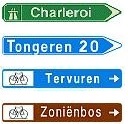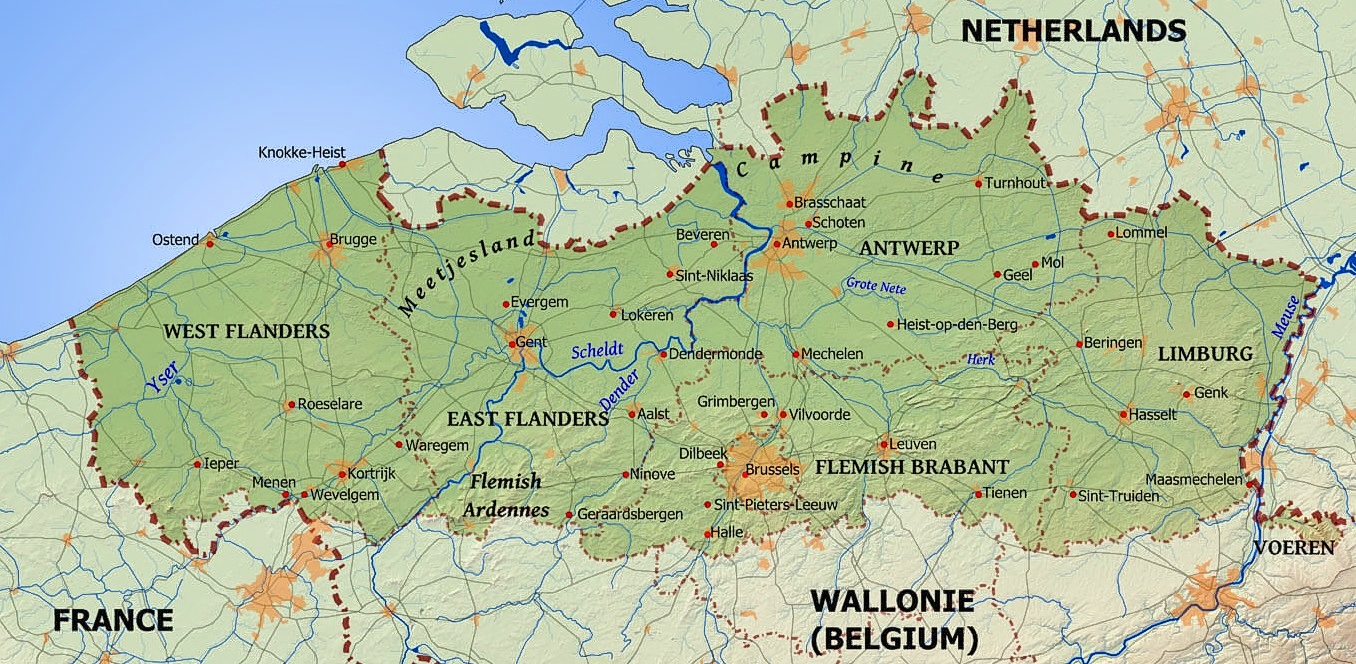The northern an almost flat region of Flanders has good cycle paths and cycle routes, connecting most villages and also continuing through most of the famous historic Belgian towns. The bike paths in Belgium are generally well planned and keep you separated from the motorized traffic. Belgium is the home of famous racing cyclists including Eddy Merkcx and Tom Boonen. They all carry out their training on the normal Belgian roads. And so do the ‘regular’ Belgian cycling tourers. They cycle to commute, for sport or just for pure recreation.
Many children cycle in Belgium, both within an organised family day out and also for getting to and from school. Doing a cycle tour with children on the flat terrain of Flanders is surprisingly easy and enjoyable. It is safe (no speedy downhill parts), predictable and also matches their levels of stamina. Children can be introduced to the idea of cycling at an early age by using bike seats and trailers that simply attach to adult bikes.
Climate
Belgium enjoys a temperate, maritime climate. Winters are generally mild and summers warm. April till October is the best period for a cycling tour. Rainfall is distributed throughout the year. January and February are considered the coolest months of the year, whereas July and August are the warmest. Sometimes easterly winds bring a more continental type of weather pattern to the eastern part of Flanders and the southern (hilly) part of Wallonia. Flanders is virtually flat and therefore endures more breezy conditions, although more so in the winter than in the summer, and especially in the coastal areas.
Traffic rules for cyclists
The most important rules for cyclists; under Belgian traffic laws:
- On a crossing (with equal priority) the traffic coming from the right has the right of way. The 'right of way' rules do not distinguish between 'slow traffic' (bicycles, mopeds, etc.) and 'fast traffic' (motorcycles and cars etc.).
- Traffic that is turning off a main road must give way to the traffic that continues along that road. This also means that cars turning right have to give priority to bikes going straight on.
- Cyclists are not allowed on motorways.
- Cycling side by side (max. 2 persons) is permitted provided that other road-going traffic is not inconvenienced.
- Changing direction is indicated by putting your arm out in the desired direction.
- The right of way situation on roundabouts can be unclear, for some roundabouts the priority is according to the general rule (i.e. the traffic coming from the right has priority), while on others, the traffic approaching the roundabout has to yield to the traffic already on it. For those that have, road markings (white triangles) are more commonly used than the right-of-way traffic signs.
Most important traffic signs for cyclists

Designated bicycle paths / lanes

Bicycles not allowed

Give way / Yield (sign and/or road markings)
Road signs
 Most roads and cycle paths in Belgium are signposted. These are green signs for motorways, blue signs for both motorized and non-motorized traffic and brown signs that indicate the route to a particular landmark. The typical bicycle signs are blue or brown and bear a bicycle logo and indicate the shortest, and most cycle-friendly route from A to B.Distances are indicated in kilometres. Because there are two official languages in Belgium, in Flanders all the road signs are in Dutch while in southern Wallonia they are all in French. This doesn't create problem if your destination is Brussels: Brussel in Flemish, Bruxelles in French. However, it can be a problem if you are looking for e.g. Mons in French which is Bergen in Flemish or Anvers in French which is Antwerpen in Flemish.
Most roads and cycle paths in Belgium are signposted. These are green signs for motorways, blue signs for both motorized and non-motorized traffic and brown signs that indicate the route to a particular landmark. The typical bicycle signs are blue or brown and bear a bicycle logo and indicate the shortest, and most cycle-friendly route from A to B.Distances are indicated in kilometres. Because there are two official languages in Belgium, in Flanders all the road signs are in Dutch while in southern Wallonia they are all in French. This doesn't create problem if your destination is Brussels: Brussel in Flemish, Bruxelles in French. However, it can be a problem if you are looking for e.g. Mons in French which is Bergen in Flemish or Anvers in French which is Antwerpen in Flemish.
Some important road sign texts:
-
‘uitgezonderd’ - this sign does not apply to (e.g. cyclists);
-
‘verplicht’ - mandatory;
-
'doorgaand verkeer’ - main through-road, non-local traffic;
-
‘slecht wegdek’ - poor road surface;
Safety
Helmets
There is no legal obligation to wear a helmet in everyday cycling, only in organised racing competitions. In everyday –flat terrain- cycling helmets are rarely worn during a recreational cycling tour, except for young children. Most people have a style and speed of cycling where such is, or thought to be less necessary.
Lightning
A (white bulb) head and (red bulb) tail-light are compulsory after dark.
Bicycle theft
Like everywhere else in the world, in Belgium there is bicycle theft. A good cable– or chain lock is highly recommended. Some towns have secure parking facilities for bicycles at railway stations and shopping centres. Remember the motto: “If you’re not riding your bike; lock it”.
Liability
In Belgium objective liability applies, which means that in a collision between a motorized vehicle and a cyclist, the insurance of the motorized vehicle always has to pay. The courts give separate judgements concerning liability and guilt in such situations. Thus, cyclists remain responsible for their own traffic-behaviour. They can be fined for traffic violations and if their traffic behaviour has further consequences, then the judge is at liberty to pass sentence on them.

